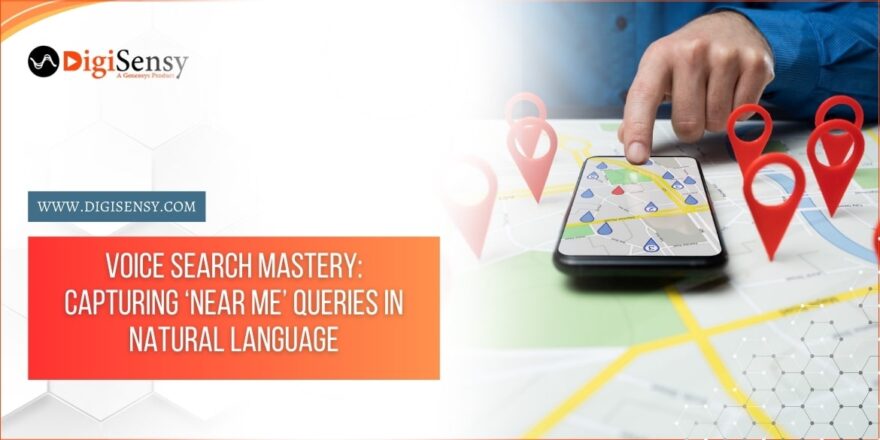The digital world of today moves very fast, and a company is no longer competing with local competitors alone. Even though your competitors may be a few clicks away and they are located halfway across the world. However, in the matter of local clients, who are, by far, most likely to visit your shop, to hire your services, or to become constant clients, visibility of location-based search is everything. And here is where Schema Markup and Geo-Optimised AI Content come in.
Although many businesses are familiar with search engine optimisation (SEO), not many are completely aware of how schema markup, a structured data language, can be utilised to make search engines read, grasp and prioritise their content about specific geographical locations. Schema markup can turn into the hidden weapon of businesses aiming to be a dominant force in local search rankings when combined with other local search optimisation techniques such as content targeting locally relevant keywords and intent using AI tools.
This blog will take you through what schema markup is, why it is important in geo-targeting, and how to implement it step-by-step, grilling you with technicalities that leave you choking at the word schema. It doesn’t matter which of the above groups describes you; by the end of this, you will have a clear, actionable roadmap.
Schema Markup and Its Importance Explained
Imagine schema markup to be the interpreter between your site and search engines, whereas your human visitors would see pages that contain hyperlinks, pictures, and videos, the search engines, such as Google, would see strings of code. Through schema markup, these search engines are able to know precisely the subject matter of your content, whether it be a business listing, a product, a recipe or an event.
Suppose you have a beauty salon in Lucknow. Without schema markup, Google may know your business name and some content, but it still cannot know your specific location, services and customer reviews. You could present a clean syndication of information to Google with schema markup: It is a beauty salon, operating at Ashiyana, Lucknow, with operational hours between 10 AM and 8 PM, and specialises in activities related to hair, skincare, and make-up services, and the rating is 4.8 stars out of 250 reviews. Once Google has this structured information, they can show it directly in the search results via rich snippets, location packs and on maps – which will make your local customers easier to find and trust you.
The Geo-Optimised AI Content Role
Schema markup may deal with the technical aspect of speaking to the search engines, but geo-optimised AI content does the same in the human-friendly facet. Geo-optimisation is all about specific location targeting your website content based on names, neighbourhoods, terms, and text related to that geographical location.
This way of how it happens is made more efficient and repeatable with AI. Using AI tools, one can analyse what local keywords perform the best, generate content variations to be used in various neighbourhoods, and even make the writing tone fit your brand. But it is not a wise solution simply to cram the names of locations into text. AI content has the requirement of being authentic, relevant, and useful to the local populations.
By combining the schema markup with geo-optimised AI content, you basically provide search engines with the narrative as well as the blueprint to have you in the right place in front of the right audience location-wise.
Why This is an Effective Combination of Local SEO
Suppose that you have a chain of cafes in three cities, Lucknow, Kanpur, and Prayagraj. In the absence of a schema and geo-optimisation, Google may consider all of your cafe pages as comparable and may not show them in location-based searches. When, however, the two are present:
The data provided on each of the cafe sites would include schema data of the precise address, phone number, business hours, and customer rating.
Geo-specific AI-created content would make sure that every page would speak about landmarks, events and offers that are relevant to that place. The Lucknow cafe page would be confidently served to those searching for the best cafe in Hazratganj, and the Kanpur cafe page would be served to those searching coffee shop near Mall Road, Kanpur.
This two-pronged strategy provides you with a better opportunity of showing up not only in regular searches, but also in the Local Pack at the top of local search results, which is Google’s golden real estate.
Step-by-Step Guide to Implement Schema Markup for Geo-Optimised AI Content
Step 1: Identify Your Local Content Goals.
You must first ensure you understand what localities you want to target as well as what actions you would like visitors to perform, before adding any schema markup. Do you want to increase pedestrian traffic to your store? More domestic service reservations? Or do you want brand awareness in a different city?
After clarifying the goals, it is possible to align the schema data and AI content. To make an example–say you were trying to drive salon bookings in Lucknow–your schema markup should focus on making booking-related information kind of stand out, and your AI-generated content would bring into relief local offers, as well as testimonials.
Step 2: Pick Appropriate Types of Schema
Some of the structured data types available in schema markup are given in schema.org, which is the official library of the markup. In local SEO, the type of schema that is required is that of LocalBusiness. Depending upon your industry, you may use an alternate version such as Restaurant, Dentist, Store, Beauty Salon, or Medical Clinic.
In case you run articles, events, or sell products online, you can add two additional schema types of these elements. The trick would be putting the schema that best characterises your content and place.
Step 3: Write Geo-Specific AI Content
ChatGPT or other content generators with specialised tools come to the rescue here. Write different high-quality content that should be location-specific to each targeted location. This includes the mention of local landmarks, local references to events, and even the tone of voice you are using should sound like that particular community.
By way of illustration, rather than, say, stating, “We provide the best coffee in town,” your Lucknow page might say, “Our Hazratganj cafe is the coolest place to stop on your way back to town after a walk along Janeshwar Mishra Park, with blends that are freshly roasted and crowd-pleasing by locals.” This low-key localisation creates credibility.
Step 4: Schema Markup on Your Pages
You may manually add schema markup in JSON-LD format (recommended by Google) or use the SEO plug-ins, provided they are integrated with your chosen CMS, for example, WordPress. The following schema should be used:
- Business name is what it is in real life
- Address (in the proper format of your country)
- International telephone number
- Opening hours
- Website URL
- Geo-coordinates of accurate mapping
- The reviews and ratings of customers, in case they are present
In the case of having more than one location, make a different schema entry for each of the location pages.
Step 5: Try Out Your Schema
You can paste your page’s URL or snippet code into the Google Rich Results Test tool to know whether your schema was implemented correctly. It is important to use this step since even a minor formal inaccuracy can render Google unable to recognise your structured data.
Step 6:Administration and Optimisation
This is not a one-off task of adding schema markup, geo-optimised AI text-based or video-based. Check your local ranking, visit indicators of location-based websites and change your content, time after time. Some local keywords may be more effective, or you may see seasonal posts bring more traffic.
Some Frequent Problems
A typical error made relates to the insertion of the same generic content in all location pages. This can be viewed by search engines as duplicate material, and it reduces your ranking opportunity. The other mistake is the failure to update schema markup during any changes of business information, such as a shift in location or business hours.
In the same regard, applying excessive keywords in AI content makes it appear robotic and unnatural, and also repels potential customers. Balance needs to be optimised; real readability needs to be realised.
Future of Geo-Optimised AI Content Schematic
User experience and search intent are the new concerns of search engines. This implies that they would like to deliver not only the most applicable response but also the most reliable and locally helpful one. Utilising AI to personalise content, businesses that can also marry it with accurate, rich, and structured data will gain a huge competitive edge.
Schema markup and geo-optimised content can be expected to be automatically generated with more tools as AI develops and improves. However, at this point, the companies that adjust both manually will achieve optimal results.
Final Thoughts
The olden days when a site is all that is required are long gone in the competitive digital world. To be successful locally, your business must communicate to people and search engines in a clear way. Schema markup and geo-optimised AI content allow search engines to grasp who, where, and what you do, and the local audience to feel that you are talking to them directly.
Once in place, such a combo not only raises your positions, but it also grows the possibilities of a rich result and a local pack in Google featured, which may skyrocket your visibility and conversions.
Here is something you do not want to miss in improving your business: schema markup towards geo-optimised AI content, should you be currently lacking in your business. And it is not only a technical update, but it is a direct investment in your localised brand presence and the reach to customers.




